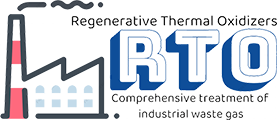Maklumat Asas.
taip
Instrumen Pemantauan Alam Sekitar
Fungsi Utama
Penyingkiran Gas Sisa
Permohonan
Industri Kimia
Jenama
Raidsant
Kecekapan Bersih
99.8%
keadaan
baru
Tanda dagangan
Raidsant
Pakej Pengangkutan
Filem Dibalut
asal usul
ZheJiang China
Penerangan Produk
HangZhou Raidsant Machinery Co.;,; Ltd.; mengambil jurusan dalam membangunkan dan mengeluarkan mesin pelletizing penyejuk serbuk inovatif dan mesin rawatan gas sisa industri yang berkaitan.; Dengan sejarah pengeluaran hampir 20 tahun,; kami mempunyai pasaran yang baik di lebih daripada 20 wilayah di China,; dan beberapa produk kami telah dieksport ke Arab Saudi, Singapura, Mexico,; Brazil,;Sepanyol,; Amerika,; Rusia dan Korea,; dan lain-lain;
Spesifikasi:;
* Lebih padat daripada kemudahan sedia ada
* Kos operasi rendah
* Jangka hayat kemudahan yang panjang
* Tiada perubahan tekanan
Tujuan:;
Sistem penjimatan tenaga yang membakar sebatian organik meruap (VOC); dan sisa gas dengan menggunakan haba,; dan ia mengumpul lebih 99.;8% haba buangan gas ekzos dengan menggunakan bahan penjana semula seramik (mangkin); dengan luas permukaan yang besar dan kehilangan tekanan rendah.;
Permohonan:;
1.; Proses pengeringan mengecat
2.; proses percetakan logam
3.; proses pengeringan gentian
4.; proses pita pelekat
5.; proses rawatan sisa
6.; proses pembuatan semikonduktor
7.; asap,; proses kuih-muih dan membakar
8.; proses petrokimia,;
9.; proses pembuatan ubat dan makanan,;
10.; proses penjanaan VOC yang lain
Kelebihan:;
* Lebih padat daripada kemudahan sedia ada
* Tiada perubahan tekanan
* Kadar pemulihan haba tinggi (lebih 95%);
* Rawatan VOC yang sempurna (lebih 99.;8%);
* Jangka hayat kemudahan yang panjang
* Kos operasi rendah
* Boleh dibuat dalam bulatan atau segi empat
Penerangan Umum dan Ciri:;
1.; Prinsip operasi
Kaedah pengendalian yang menukar nyahcas secara berterusan dengan memutarkan Injap Putar
2.; Perubahan Tekanan Proses
Tiada perubahan tekanan kerana arah angin berubah mengikut susunan mengikut putaran Injap Putar
3.; Kos Pelaburan
Sekitar 70% daripada Jenis Katil
4.; Ruang Pemasangan
Ia adalah kapal tunggal jadi ia padat dan memerlukan ruang pemasangan yang kurang.;
5.; Penyelenggaraan
Mudah untuk menyelenggaranya kerana Rotary Valve adalah satu-satunya 1 bahagian yang bergerak.;
Bahagian pengedap Rotary Valve jarang haus kerana ia berputar pada kelajuan rendah.;
6.; Kestabilan
Tiada risiko dalam proses kerana ia sentiasa dibuka walaupun Rotary Valve menghadapi masalah.;
7.; Kecekapan Rawatan
Kecekapan rawatan dikekalkan kerana bahagian pengedap jarang haus walaupun ia dikendalikan untuk masa yang lama.;
Alamat: No.3, Jalan Tengah Zhenxin, Zon Pembangunan Ekonomi, HangZhou, ZheJiang
Jenis Perniagaan: Pengeluar/Kilang, Syarikat Perdagangan
Julat Perniagaan: Bahan Kimia, Elektrik & Elektronik, Jentera Pembuatan & Pemprosesan, Keselamatan & Perlindungan
Pensijilan Sistem Pengurusan: ISO 9001
Produk Utama: Pelletizer, Flaker, Pastillator, Granulator, Chemical Pelletizer, Vocs
Pengenalan Syarikat: HangZhou Raidsant Machinery Co., Ltd., sebelum ini dikenali sebagai Kilang Jentera Plastik HangZhou Xinte mengambil jurusan dalam menghasilkan jentera kitar semula plastik yang inovatif. Dengan pengalaman hampir 20 tahun, kami mempunyai pasaran yang baik di 20 wilayah di China, dan beberapa produk kami telah dieksport ke Indonesia, Rusia dan Vietnam, dsb. Produk utama kami termasuk DZ Type Pastillator, barisan kitar semula tayar sisa, Big Caliber Plastic Talian kitar semula mesin pencincang paip, mesin salutan timah penyepuhlindapan berterusan, PET jenis QX, Talian basuh PE & badan kapal, penghancur kitar semula plastik SDP dua rel, pemotongan panas SJ unit pembuatan butiran, barisan produk tiub PVC (cinquefoil), barisan produk bahan PVC berbentuk ganjil untuk pintu dan tingkap, barisan produk butiran dalam air dan Mesin pencincang untuk plastik dan kitar semula. Kami memperoleh 5 paten teknikal.
Syarikat kami memberi penekanan kepada pembinaan semula teknikal, mengimport teknologi canggih dari dalam dan luar negara, dan membangunkan produk baharu secara berterusan. Prinsip kami adalah mencabar untuk kualiti tinggi, menawarkan produk terbaik. Kami sedang berusaha untuk merealisasikan slogan kami. Memuaskan pelanggan kami adalah usaha kami yang kekal.
Kami sedang mencari pelanggan atau ejen luar negara. Jika anda berminat dengan cadangan kami, sila beritahu kami produk mana yang paling mungkin menarik minat anda atau pelanggan anda. Kami sepatutnya sangat berterima kasih jika anda memberi kami beberapa idea tentang prospek pasaran untuk produk kami. Kami berharap untuk mendengar maklumat yang menggalakkan daripada anda tidak lama lagi! Adalah menjadi matlamat kami bahawa kami berharap kami dapat membina hubungan yang baik dengan anda sekarang atau dalam masa terdekat. Sila jangan teragak-agak untuk menghubungi kami jika anda mempunyai sebarang pertanyaan atau permintaan.
Kami juga mengalu-alukan kedatangan anda ke syarikat kami untuk membincangkan perniagaan dan berunding dengan kami. Untuk meluaskan lagi pasaran dan pelanggan kami, syarikat kami mengalu-alukan pelanggan dari dalam dan luar negara dalam isyarat jenama baharu berdasarkan konsep pengurusan baharu sepenuhnya—kualiti, penghormatan, perkhidmatan. Kami sedang mencari sistem kualiti pengurusan ISO 90001 untuk memenuhi keperluan pelanggan kami!
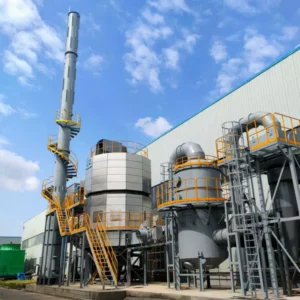
Do regenerative thermal oxidizers require continuous monitoring and control?
Yes, regenerative thermal oxidizers (RTOs) typically require continuous monitoring and control to ensure optimal performance, efficient operation, and compliance with environmental regulations. Monitoring and control systems are essential components of an RTO that enable real-time tracking of various parameters and facilitate adjustments to maintain reliable and effective operation.
Here are some key reasons why continuous monitoring and control are important for RTOs:
- Performance Optimization: Continuous monitoring allows operators to assess the performance of the RTO in real-time. Parameters such as temperature, pressure, flow rates, and pollutant concentrations can be monitored to ensure that the RTO is operating within the desired range for optimal efficiency and pollutant destruction.
- Compliance Assurance: Continuous monitoring and control help ensure compliance with environmental regulations and emission limits. By monitoring pollutant concentrations before and after the RTO, operators can verify that the system is effectively reducing emissions to meet regulatory requirements. Monitoring systems can also generate data logs and reports that can be used for compliance reporting purposes.
- Fault Detection and Diagnostics: Continuous monitoring allows for early detection of any malfunctions or deviations from normal operating conditions. By monitoring key parameters, operators can identify potential issues, such as sensor failures, valve malfunctions, or air leaks, and take corrective actions promptly. This proactive approach helps minimize downtime, optimize performance, and prevent potential safety hazards.
- Process Optimization: Monitoring and control systems provide valuable data that can be used to optimize the overall industrial process. By analyzing the data collected from the RTO, operators can identify opportunities for process improvements, energy savings, and operational efficiencies.
- Alarm and Safety Systems: Continuous monitoring enables the implementation of alarm and safety systems. If any parameter exceeds predefined thresholds or if critical malfunctions occur, the monitoring system can trigger alarms and alerts to notify operators and initiate appropriate response actions to mitigate risks.
Monitoring and control systems for RTOs typically include sensors, data acquisition systems, programmable logic controllers (PLCs), human-machine interfaces (HMIs), and specialized software. These systems provide real-time data visualization, historical data analysis, and remote access capabilities for effective monitoring and control of the RTO.
Overall, continuous monitoring and control are vital for ensuring the reliable and efficient operation of RTOs, optimizing performance, maintaining compliance, and facilitating proactive maintenance and process improvements.
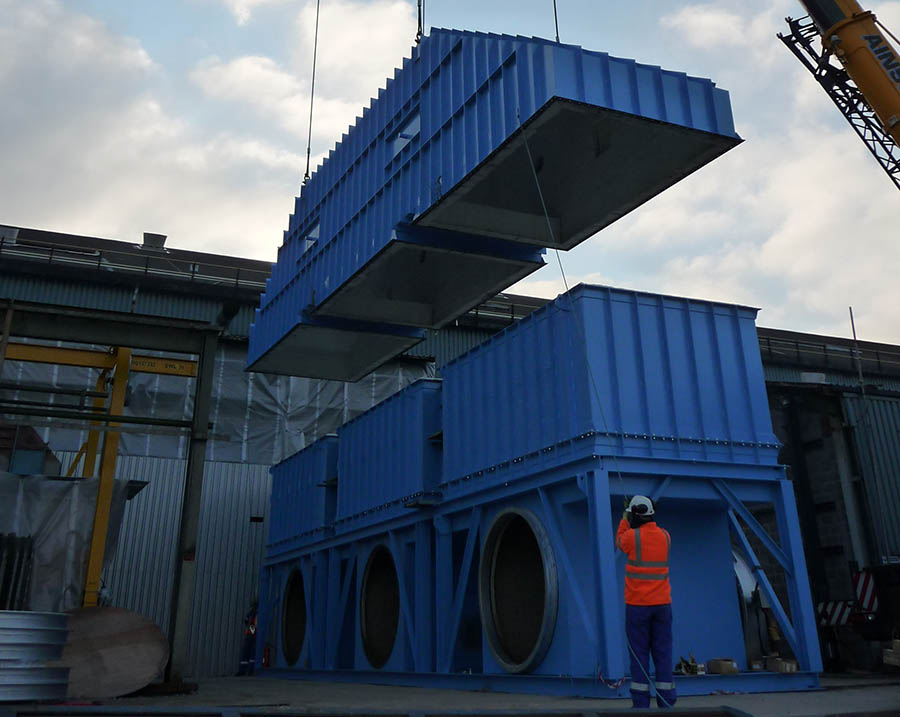
Are regenerative thermal oxidizers safe to operate?
Regenerative thermal oxidizers (RTOs) are designed with safety considerations to ensure their safe operation. When properly installed, operated, and maintained, RTOs provide a high level of safety. Here are some key points regarding the safety of operating RTOs:
- Combustion and Fire Safety: RTOs are designed to safely combust and destroy volatile organic compounds (VOCs) and other pollutants in the exhaust stream. They incorporate various safety features to prevent the risk of uncontrolled fires or explosions. These features may include flame arrestors, temperature sensors, pressure relief devices, and automated shutdown systems to ensure safe operation in the event of abnormal operating conditions.
- Control and Monitoring Systems: RTOs are equipped with advanced control and monitoring systems that continuously monitor various parameters such as temperature, pressure, and flow rates. These systems provide real-time data to operators, allowing them to detect any deviations from normal operating conditions promptly. Alarms and safety interlocks are often included to alert operators and initiate appropriate actions in case of abnormal situations.
- Heat Recovery and Thermal Efficiency: RTOs are designed to maximize thermal efficiency by recovering and reusing heat generated during the oxidization process. This reduces the overall energy consumption and minimizes the risk of heat buildup within the system, contributing to safe operation and preventing excessive temperatures that could pose safety hazards.
- Equipment and Material Selection: RTOs are constructed using materials that can withstand the high temperatures and corrosive conditions encountered during operation. Heat-resistant materials, such as ceramic beds or metallic heat exchangers, are commonly used. Proper material selection ensures the integrity and longevity of the equipment, reducing the risk of failures or leaks that could compromise safety.
- Compliance with Standards and Regulations: RTOs must comply with applicable safety standards and regulations. These standards define specific requirements for the design, installation, operation, and maintenance of air pollution control systems, including RTOs. Compliance with these standards ensures that the RTOs meet the necessary safety criteria and helps safeguard the health and well-being of personnel and the surrounding environment.
- Operator Training and Maintenance: Adequate operator training and regular maintenance are crucial for safe RTO operation. Operators should receive comprehensive training on the system’s operation, safety procedures, and emergency response protocols. Additionally, routine maintenance and inspections help identify and address any potential safety concerns or equipment issues before they escalate.
While RTOs are generally safe to operate, it is essential to follow the manufacturer’s guidelines, maintain proper safety protocols, and adhere to applicable regulations to ensure safe and reliable operation.
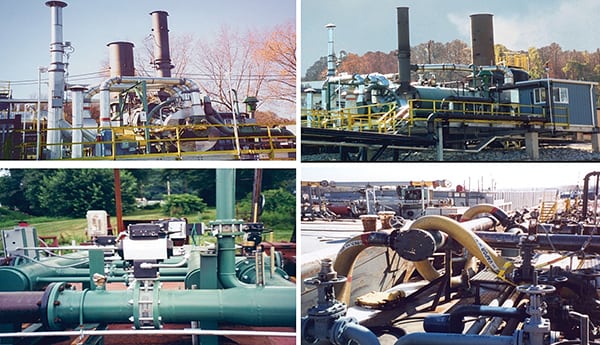
How do regenerative thermal oxidizers compare to other air pollution control devices?
Regenerative thermal oxidizers (RTOs) are highly regarded air pollution control devices that offer several advantages over other commonly used air pollution control technologies. Here’s a comparison of RTOs with some other air pollution control devices:
| Comparison | Pengoksida Terma Regeneratif (RTO) | Electrostatic Precipitators (ESPs) | Scrubbers |
|---|---|---|---|
| Kecekapan | RTOs achieve high VOC destruction efficiency, typically exceeding 99%. They are highly effective in destroying volatile organic compounds (VOCs) and hazardous air pollutants (HAPs). | ESPs are effective in collecting particulate matter, such as dust and smoke, but they are less effective in destroying VOCs and HAPs. | Scrubbers are efficient in removing certain pollutants, such as gases and particulate matter, but their performance may vary depending on the specific pollutants being targeted. |
| Kebolehgunaan | RTOs are suitable for a wide range of industries and applications, including high-volume exhaust gases. They can handle varying concentrations and types of pollutants. | ESPs are commonly used for particulate matter control in applications such as power plants, cement kilns, and steel mills. They are less suitable for VOC and HAP control. | Scrubbers are widely used for removing acid gases, such as sulfur dioxide (SO2) and hydrogen chloride (HCl), as well as certain odorous compounds. They are often employed in industries such as chemical manufacturing and wastewater treatment. |
| Energy Efficiency | RTOs incorporate heat recovery systems that allow for significant energy savings. They can achieve high thermal efficiency by preheating the incoming process air using the heat from the outgoing exhaust stream. | ESPs consume relatively low energy compared to other technologies, but they do not offer heat recovery capabilities. | Scrubbers generally consume more energy compared to RTOs and ESPs due to the energy required for liquid atomization and pumping. However, some scrubber designs may incorporate heat recovery mechanisms. |
| Space Requirements | RTOs typically require more space compared to ESPs and certain scrubber designs due to the need for ceramic media beds and larger combustion chambers. | ESPs have a compact design and require less space compared to RTOs and some scrubber configurations. | Scrubber designs vary in size and complexity. Certain scrubber types, such as packed bed scrubbers, may require a larger footprint compared to RTOs and ESPs. |
| Penyelenggaraan | RTOs generally require regular maintenance of components such as valves, dampers, and ceramic media beds. Periodic media replacement may be necessary depending on the operating conditions. | ESPs require periodic cleaning of collection plates and electrodes. Maintenance activities involve the removal of accumulated particulate matter. | Scrubbers require maintenance of liquid circulation systems, pumps, and mist eliminators. Regular monitoring and adjustment of the chemical reagents used in the scrubbing process are also necessary. |
It’s important to note that the selection of an air pollution control device depends on the specific pollutants, process conditions, regulatory requirements, and economic considerations of the industrial application. Each technology has its own advantages and limitations, and it’s essential to evaluate these factors to determine the most appropriate solution for effective air pollution control.
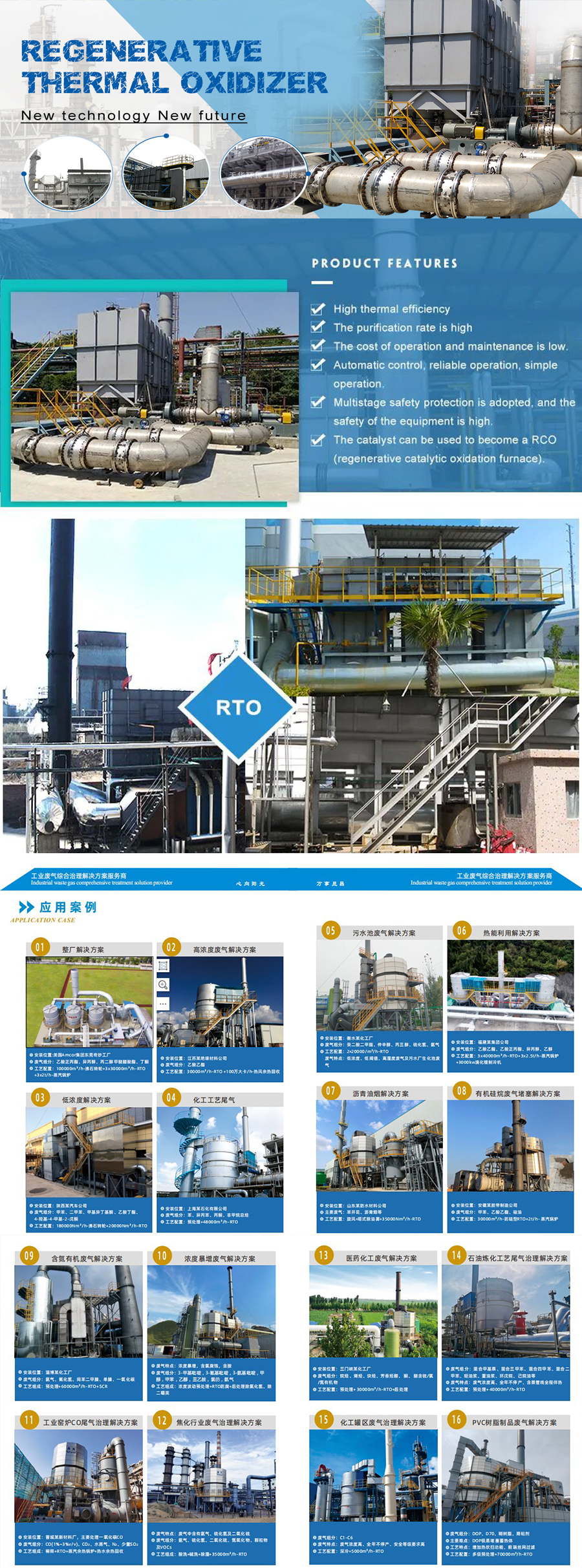
editor by CX 2024-04-10
